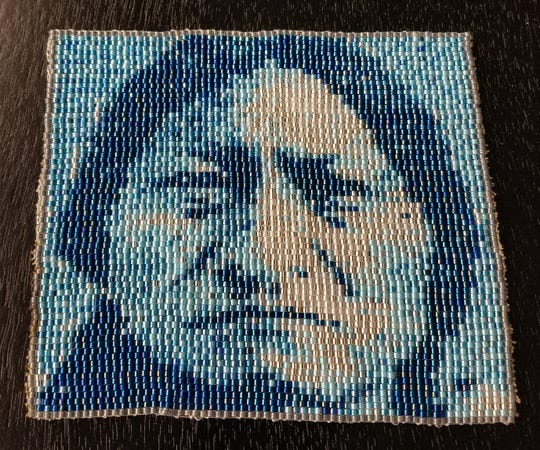Suicide rate for Native American women up 139%, men up 71% since 1999
Suicide rate for Native American women is up 139%
Alia E. Dastagir, USA TODAYPublished 2:26 p.m. ET June 21, 2019 | Updated 10:41 a.m. ET June 22, 2019
Suicide survivor Shelby Rowe hated herself for her struggles with PTSD. By reconnecting with her Native American roots, she's learned to cope with her illness. USA TODAY
CONNECTTWEETLINKEDINCOMMENTEMAILMORE
The US suicide rate is up 33% since 1999, but for Native American women and men, the increase is even greater: 139% and 71%, respectively, according to an analysis out this week from the Centers for Disease Control and Prevention's National Center for Health Statistics.
Suicide disproportionately affects non-Hispanic American Indian and Alaska Natives, according to the CDC. A 2018 CDC report found their suicide rate was more than 3.5 times higher than those among racial and ethnic groups with the lowest rates.
Experts who study Native American suicide blame higher rates of poverty, substance abuse and unemployment as well as geographical isolation, which can make it difficult for people to access mental health care.
Also, American Indian and Alaska Native women experience higher levels of violence than other US women. Nearly 84% experience violence in their lifetime, according to a 2016 report from the National Institute of Justice. This includes 56% who have experienced sexual violence and roughly the same percentage who have experienced physical violence by an intimate partner. Research shows more than a third of women who have been raped have contemplated suicide, and 13% have attempted, according to the National Sexual Violence Resource Center.
Native Americans and Alaska Natives also experience PTSD more than twice as often as the general population, according to SAMHSA.
"You get this historical trauma, and people aren’t able to resolve it. It gets internalized and passed down to future generations," said Karen Hearod, a member of the Choctaw Nation of Oklahoma and regional administrator at the Substance Abuse and Mental Health Services Administration (SAMHSA).
A separate analysis published Tuesday in the Journal of the American Medical Association found the suicide rate for all US teens and young adults increased in 2017 to its highest point since 2000. Of Native American suicide deaths, more than a third were between 10 and 24 years old, according to the CDC.
Shelby Rowe, a member of the Chickasaw Nation, was diagnosed with PTSD after her first husband died in an accidental shooting when she was 19, weeks after she gave birth to their second son. She contemplated suicide, but went through a lot of counseling in an effort to heal.

Shelby Rowe stands in the Aaholiitobli' Honor Garden at the Chickasaw Cultural Center in Sulphur, Oklahoma. Surrounding her are plaques honoring Chickasaw leaders, elders and warriors. Rowe has reconnected with her Chickasaw roots as part of her healing process. (Photo: Jasper Colt, USA TODAY)
She married twice more, had a third son and, drawn to helping people, established a career in public health. In 2007, she became the executive director of the Arkansas Crisis Center, which runs the state's suicide hotline. But three years later, when her third marriage ended suddenly, triggering her PTSD, she attempted suicide.
"I wanted to live, I just didn’t know how to anymore," she said.
After her attempt, Rowe had an emotional conversation with her father that she said helped her feel connected in a way she'd never felt before. Something shifted inside her.
“I just felt like my ancestors reached out and embraced me," she said. She described it as a spiritual scolding, like "a parent who scolds their kid for running out into traffic. It was, ‘why did you do this? Don’t you know who you are? You are all of our hopes and dreams. All of these sacrifices we made over time were so you would be here. Please continue our legacy.’”
Get the News Alerts newsletter in your inbox.
Get alerted to the latest stories to stay on top of the news.
Delivery: Varies
Your Email
Rowe said since her attempt, she has spent a lot of time since reconnecting with her Native heritage, which experts say can help reduce risk.
“Despite all of the things that tribes have endured, we're still here,” Hearod said. “There is strength and resilience we can find in that.”

Rowe's beadwork of Sitting Bull. (Photo: Shelby Rowe)
More stories of hope:
Suicide never entered his mind. Then 9/11 happened.
Young, transgender and fighting a years-long battle against suicidal thoughts
Stepping back from the ledge
You may also be interested in:
To connect with suicide survivors and others, join USA TODAY's Facebook group I Survived It
What actually happens when you call the National Suicide Prevention Lifeline
How to help someone who's suicidal
Suicide Lifeline: If you or someone you know may be struggling with suicidal thoughts you can call the U.S. National Suicide Prevention Lifeline at 800-273-TALK (8255) any time of day or night or chat online.
Crisis Text Line provides free, 24/7, confidential support via text message to people in crisis when they dial 741741.
CONNECTTWEETLINKEDINCOMMENTEMAILMORE